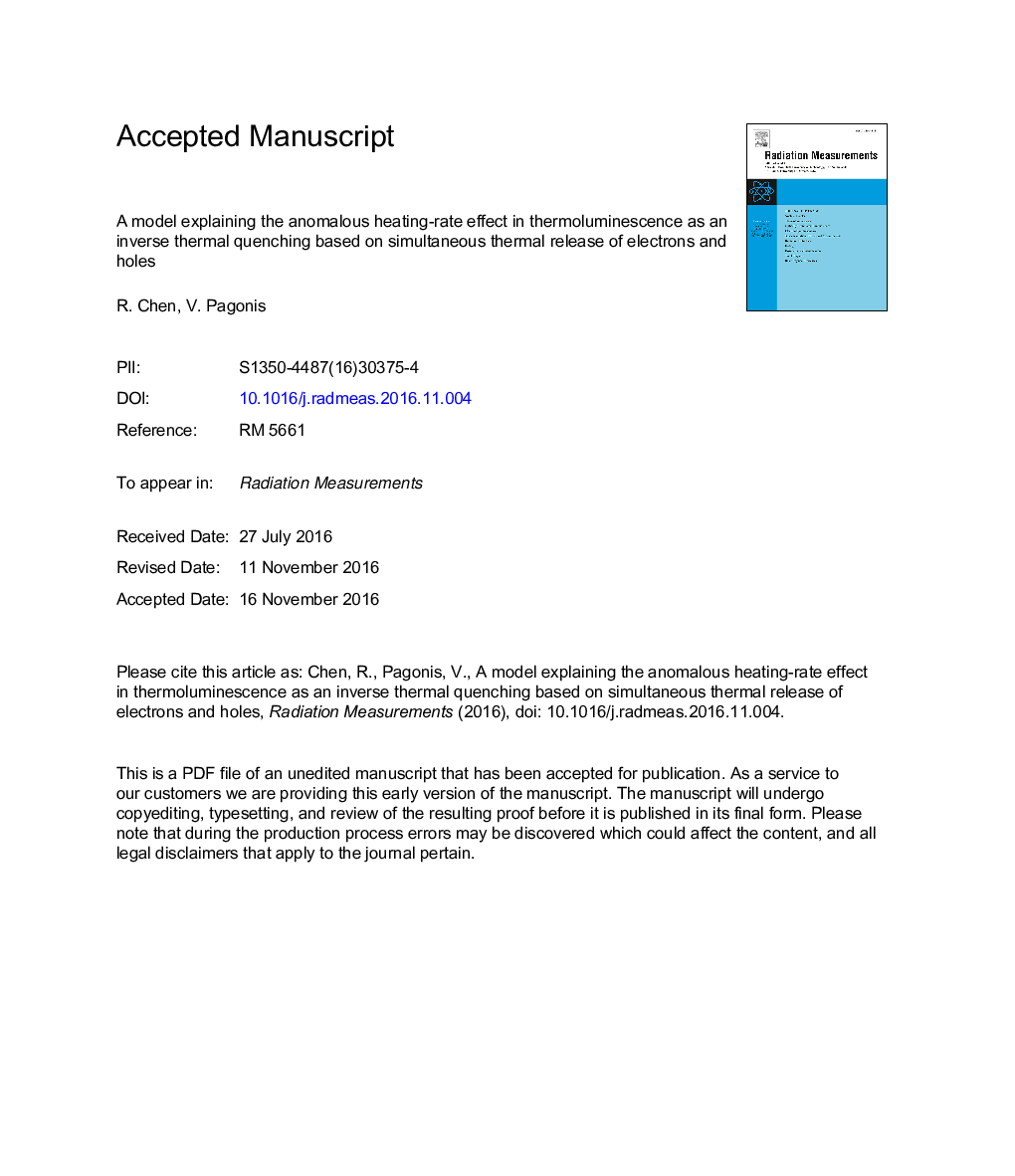| Article ID | Journal | Published Year | Pages | File Type |
|---|---|---|---|---|
| 8250105 | Radiation Measurements | 2017 | 22 Pages |
Abstract
A model is presented which explains the anomalous heating-rate effect of thermoluminescence (TL) in which the peak area increases with increasing heating rate. In a similar way to the Schön-Klasens model, the present model is based on delocalized transitions only. In addition to the occurrence of an electron trapping state and a hole recombination center, we assume the participation of a hole reservoir which competes with the other levels and participates in the process during both the excitation and the read-out stages. Moreover, we assume that the reservoir is close enough to the valence band so that holes may be thermally released in the same temperature range in which electrons are thermally raised into the conduction band. Simulations with this model show that, with certain sets of trapping parameters, an increase of the heating rates results in an increase in the area under the normalized TL curve. Inverting the roles of the recombination center and the reservoir so that the recombination of a free electron with a hole in the reservoir is assumed to be radiative and the other recombination is radiationless yields opposite results. Increasing the heating rates causes a significant decrease in the area under the TL curve which is a demonstration of the well-known thermal quenching heating-rate effect of TL. An intuitive qualitative explanation of these two effects within the proposed model is given. A recently discovered case in which two consecutive TL peaks respond to the heating rate change in opposing directions, one decreases and the other increases with increasing heating rate can also be explained by this model.
Keywords
Related Topics
Physical Sciences and Engineering
Physics and Astronomy
Radiation
Authors
R. Chen, V. Pagonis,
